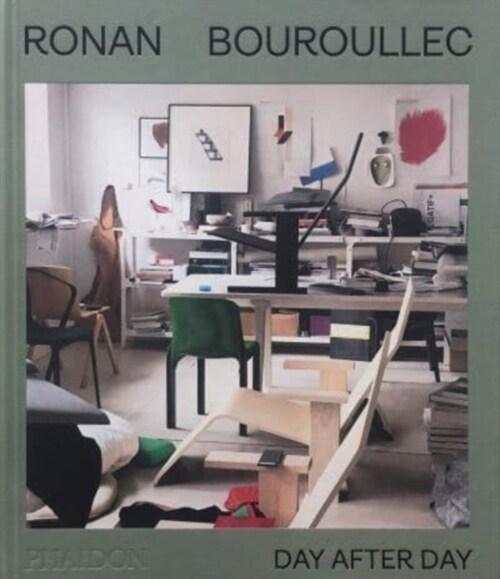책 이미지
![Form and Forces: Designing Efficient, Expressive Structures [With Access Code]](/img_thumb/9780470174654.jpg)
책 정보
· 분류 : 외국도서 > 건축/디자인 > 건축 > 건축 디자인
· ISBN : 9780470174654
· 쪽수 : 640쪽
목차
Project Team and Contributors.
Acknowledgments.
Introduction.
1 Designing a Series of Suspension Footbridges.
Basic definitions of statics: Loads, Forces, Tension, Compression, Stress.
Free-body diagrams; Vectors and scalars; Static equilibrium of concurrent forces.
The force polygon and funicular polygon for funicular structures; Bow’s notation.
Detailing steel rod elements in tension and anchoring to rock.
Lateral stability; stiffening a tensile structure.
Construction detailing and planning.
2 Designing a Suspended Roof.
Designing and detailing a suspended roof.
Designing funicular curves with specified properties.
Families of funicular curves.
Static equilibrium.
Components of forces.
Steel cable fastenings and details.
Lateral bracing.
Regulating forces on masts and backstays.
3 Designing a Concrete Cylindrical Shell Roof.
Shaping funicular arches and vaults in compression.
Form-finding: catenary, parabola, circle.
Stiffening compressive structures against buckling and unbalanced loadings.
Detailing and constructing a thin single-curvature shell.
4 Master Lesson: Designing a Trussed Roof.
Structural idea generation in three dimensions; The creative process.
Graphical truss analysis; Influence of truss form and depth on member forces.
Creative latitude in structural design and positive interactions between architects and engineers.
5 Designing a Building on a Vertical Site.
Moments of forces.
Equilibrium of nonconcurrent forces.
Graphical analysis of nonconcurrent forces.
Detailing and construction of a steel frame structure on a very difficult site.
6 Designing with Multipanel Trusses.
Various methods of analysis for multipanel trusses.
Common truss configurations and their uses.
Developing and refining the form of complex trusses based upon forces and connections.
Detailing and construction of a building with heavy timber trusses.
7 Designing a Fanlike Roof.
Extending graphical truss analysis to design fanlike structures both compressive and tensile (cable-stayed).
Finding good forms and member forces for cable-stayed, fanlike, and treelike structures.
Design and detailing issues using steel tube construction.
8 Designing Unreinforced Masonry (John A. Ochsendorf and Philippe Block).
Understanding, designing, and detailing traditional unreinforced masonry.
Stability of masonry vaults with ties, engaged and flying buttresses.
Load tracing and kerns.
Graphical analysis of arches of predetermined shape.
Design and formal vocabulary of funicular masonry arches and vaults.
9 Master Lesson: Designing a Concrete Shell Roof for a Grandstand.
Equilibrium in three dimensions of a composite structure; combining funicular vaults and trusses.
Architectural and engineering interactions in designing forms and construction processes.
Working in SI (metric) units.
10 Designing Efficient Trusses.
Reversing the graphical process to synthesize shapes of constant-force trusses and arches.
Rapid assessment of truss efficiency by comparing force polygons.
Typical forms of constant-force trusses.
11 Designing Restraints for Funicular Structures.
Tensile and compressive strategies of restraint to resist change of shape.
Effects of unbalanced loads on structures.
12 Designing Shell and Membrane Structures (Michael H. Ramage).
Form-finding techniques applied to shell, tent, pneumatic, and membrane structures.
Material constraints and opportunities.
Detailing lightweight structures.
13 Structural Materials.
Granular materials.
Solid materials.
How materials break.
Transmission of forces in solid materials.
Characteristics of a good structural material.
Common structural materials.
Concepts of stress and strain.
Factors of safety.
14 Master Lesson: Designing with the Flow of Forces.
Trajectories of principal stresses.
Strut-and-tie modeling; truss modeling.
Three patterns of force flow; applications of basic patterns to any structural element.
Use of graphical truss solutions to find forces in truss models.
15 Designing a Bay of Framing.
Configuring building frames in three dimensions; laying out a framing plan.
Understanding bays, decking, joists, beams, girders, slabs, columns, and framing materials.
Load tracing for gravity and lateral loads.
Bracing to resist lateral loads.
Criteria influencing design of bays in very tall buildings where lateral loads predominate.
Integration with vertical transportation, life safety and egress planning, mechanical systems.
16 Bending Actions on Beams.
Analysis of external load patterns on structures; quantifying and simplifying external loadings.
Bending moments and vertical forces.
V and M diagrams; relationship to force polygons and funicular polygons.
Graphical and semigraphical constructions.
17 How Beams Resist Bending.
Resistance mechanisms of beams.
Lattice pattern of flow of forces.
Deflection calculations.
Development of mathematical expressions for bending stresses and web stresses in rectangular beams.
Designing bays of wood framing.
18 Bending Resistance in Beams of Any Shape.
Properties of complex cross-sectional shapes.
Moment of inertia.
Composite action.
Designing bays of steel framing.
19 Designing Columns, Frames, and Load-Bearing Walls.
Types of columns: short, intermediate, long; buckling and deflection.
Designing column restraints; designing optimum forms for columns.
Load-bearing walls.
Portal frames, hinges.
Architectural and historical expressions of columns.
20 Designing a Sitecast Concrete Building.
Composite action of steel and concrete in concrete beams, slabs, and columns.
Selection and design criteria for reinforced concrete framing.
Opportunities and constraints for slab openings.
Relationship of structural system to program.
Designing bays of reinforced concrete framing.
21 Master Lesson: Designing in Precast Concrete.
Multidisciplinary project design teams.
Medium-rise building planning and choice of framing systems.
Integration with life safety and egress planning.
Integration with mechanical and electrical services.
Designing with precast concrete framing elements.
22 Designing an Entrance Canopy.
Designing a constant force beam.
Deriving a beam profile from the bending moment diagram.
Assuring overall stability of an unusual structure.
Combined axial and bending stress in a beam.
Guidelines for shaping structures.
Afterword: Engineers and Architects.
Index.













![Form and Forces: Designing Efficient, Expressive Structures [With Access Code]](./img_thumb/9780470174654.jpg)







![[eBook Code] Exercises in Building Construction (eBook Code, 7th)](/img_thumb/9781119621898.jpg)





